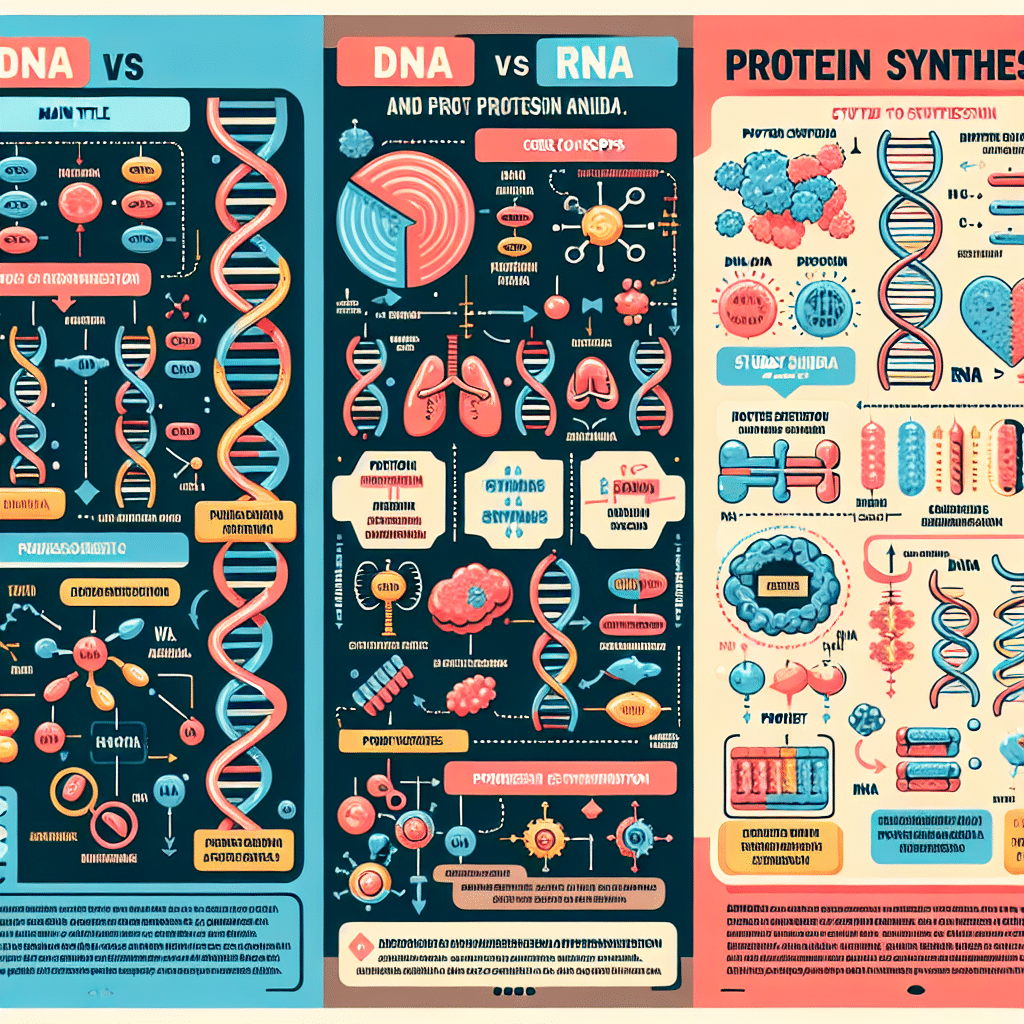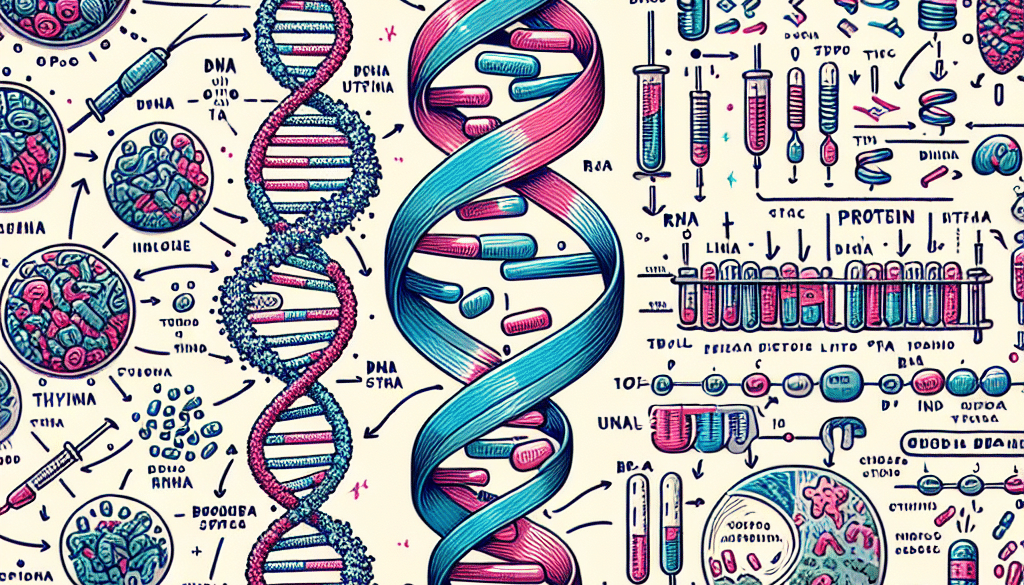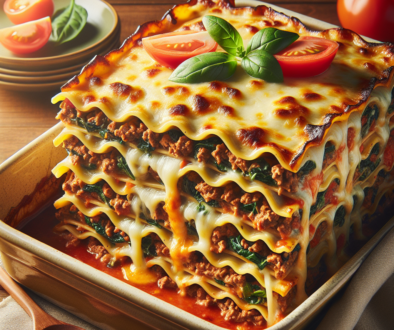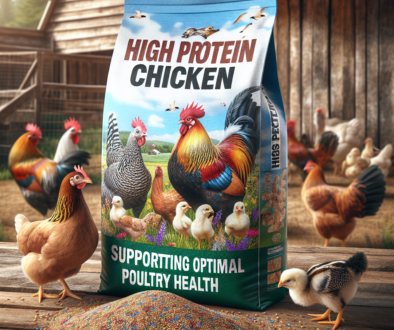Amoeba Sister Video Recap DNA vs RNA and Protein Synthesis: Study Aid
-
Table of Contents
- DNA vs RNA and Protein Synthesis: Essential Study Aid
- Understanding the Basics: DNA vs RNA
- The Central Dogma of Molecular Biology
- Transcription: DNA to RNA
- Translation: RNA to Protein
- Amoeba Sisters Video Recap as a Study Aid
- Benefits of Using Video Recaps for Learning
- Real-World Applications and Case Studies
- Conclusion: Key Takeaways
- ETprotein: Your Source for High-Quality Protein Products
DNA vs RNA and Protein Synthesis: Essential Study Aid

Understanding the fundamental processes of DNA, RNA, and protein synthesis is crucial for students and professionals in the field of biology and genetics. The Amoeba Sisters, a popular educational channel, have created a video recap that simplifies these complex topics. This article will delve into the differences between DNA and RNA, the process of protein synthesis, and how these biological mechanisms are essential to life. We will also explore how the Amoeba Sisters’ video recap serves as an effective study aid for learners.
Understanding the Basics: DNA vs RNA
DNA (deoxyribonucleic acid) and RNA (ribonucleic acid) are nucleic acids that play vital roles in cellular functions. They are composed of nucleotides, which include a sugar, a phosphate group, and a nitrogenous base. However, there are key differences between the two:
- Sugar Component: DNA contains deoxyribose, while RNA contains ribose.
- Nitrogenous Bases: DNA has adenine (A), guanine (G), cytosine (C), and thymine (T). RNA has A, G, C, and uracil (U) instead of T.
- Structure: DNA is typically double-stranded and forms a double helix, whereas RNA is usually single-stranded.
- Function: DNA stores genetic information, while RNA plays various roles, including messenger RNA (mRNA), transfer RNA (tRNA), and ribosomal RNA (rRNA) in protein synthesis.
The Central Dogma of Molecular Biology
The central dogma of molecular biology describes the flow of genetic information within a biological system. It involves two key processes: transcription and translation.
Transcription: DNA to RNA
Transcription is the first step in gene expression. During this process, a specific segment of DNA is copied into RNA by the enzyme RNA polymerase. This occurs in the following stages:
- Initiation: RNA polymerase binds to a promoter region on the DNA and unwinds the DNA strands.
- Elongation: RNA polymerase reads the DNA template strand and synthesizes a complementary RNA strand.
- Termination: RNA polymerase reaches a terminator sequence and releases the newly formed RNA molecule.
The primary RNA transcript, called pre-mRNA in eukaryotes, often undergoes processing to become mature mRNA, which then exits the nucleus to participate in translation.
Translation: RNA to Protein
Translation is the process by which mRNA is decoded by a ribosome to produce a specific amino acid chain, or polypeptide, that will fold into an active protein. Translation occurs in the following steps:
- Initiation: The ribosome assembles around the target mRNA. The first tRNA is attached at the start codon.
- Elongation: tRNA molecules, carrying amino acids, match their anticodons with the mRNA codons at the ribosome, forming a peptide bond between amino acids.
- Termination: The process continues until a stop codon is reached, at which point the polypeptide is released.
After translation, the polypeptide chain undergoes folding and, sometimes, post-translational modifications to become a functional protein.
Amoeba Sisters Video Recap as a Study Aid
The Amoeba Sisters’ video recap on DNA vs RNA and protein synthesis provides a visual and auditory learning experience that can enhance comprehension and retention of these complex topics. Their engaging animations and clear explanations break down the intricate steps of transcription and translation, making them more accessible to learners of all levels.
Benefits of Using Video Recaps for Learning
- Visual Learning: Visual aids can help students grasp difficult concepts more easily.
- Engagement: Animated videos are more engaging than text-based materials, which can increase motivation and interest in the subject matter.
- Accessibility: Videos can be paused, replayed, and watched at the learner’s own pace, accommodating different learning speeds.
Real-World Applications and Case Studies
The principles of DNA, RNA, and protein synthesis are not just academic; they have real-world applications in medicine, biotechnology, and genetics. For instance:
- Genetic Engineering: Scientists can manipulate DNA sequences to create genetically modified organisms (GMOs) with desirable traits.
- Gene Therapy: By inserting therapeutic genes into a patient’s cells, certain genetic disorders can be treated or cured.
- Protein Therapeutics: Proteins produced through recombinant DNA technology are used as treatments for various diseases, such as insulin for diabetes.
Conclusion: Key Takeaways
Understanding DNA, RNA, and protein synthesis is essential for anyone studying life sciences. The Amoeba Sisters’ video recap provides an excellent study aid that simplifies these complex processes. The key takeaways from this article are the distinct differences between DNA and RNA, the steps involved in transcription and translation, and the importance of these processes in real-world applications.
ETprotein: Your Source for High-Quality Protein Products
For those interested in the practical applications of protein synthesis, ETprotein offers a range of high-quality protein products. Whether you’re involved in the food and beverage industry, sports nutrition, or health and wellness, ETprotein’s organic and non-GMO protein powders can meet your needs. Their commitment to quality and customer service makes them a top choice for protein supplies.
About ETprotein:
ETprotein, a reputable plant protein vegan protein Chinese factory manufacturer and supplier, is renowned for producing, stocking, exporting, and delivering the highest quality organic bulk vegan protein and plant proteins. They include Organic rice protein, clear rice protein, pea protein, clear pea protein, watermelon seed protein, pumpkin seed protein, sunflower seed protein, mung bean protein, peanut protein etc. Their offerings, characterized by a neutral taste, non-GMO, allergen-free attributes, cater to a diverse range of industries. They serve nutraceutical, pharmaceutical, cosmeceutical, veterinary, as well as food and beverage finished product distributors, traders, and manufacturers across Europe, USA, Canada, Australia, Thailand, Japan, Korea, Brazil, and Chile, among others.
ETprotein specialization includes exporting and delivering tailor-made protein powder and finished nutritional supplements. Their extensive product range covers sectors like Food and Beverage, Sports Nutrition, Weight Management, Dietary Supplements, Health and Wellness Products, and Infant Formula, ensuring comprehensive solutions to meet all your protein needs.
As a trusted company by leading global food and beverage brands and Fortune 500 companies, ETprotein reinforces China’s reputation in the global arena. For more information or to sample their products, please contact them and email sales(at)ETprotein.com today.












